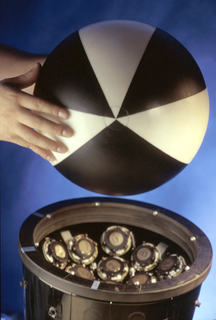That's true, tomislav. However, couldn't you use an "opposite" Halbach array, as a hub, on the center of the first image of my previous post? I thought that was evident...

In that case, as I "see" it, you don't need energy to levitate the rim. Besides, it does not matter how much the tire deforms, the hub and rim don't deform in an appreciable way. Finally, the interference won't matter, I think.
So, you don't need a rail: you "wrap up the rail" around the Halbach, as I commented on the second photo: you create a "circular track" inside the wheel, that is, a magnetic bearing. It's like the difference between rolling something on logs (like Egyptians allegedly did), which roughly correspond to the second photo, and rolling something using a bearing, which corresponds to the first photo. That's what I "get" from your post, at least.
Maybe I'll try to build a bearing like that during these vacations. I haven't seen one before. Have any of you? I imagine that the problem will be the simmetry in the direction of the axle... Maybe (double maybe!) it will behave like a lubricated bearing: the more the hub comes closer to the rim, the more repulsion you get among them.
Anyway, I'll keep you informed.
EDIT: After thinking for a while, that idea is irrealizable. Any moving magnetic field will create a force. Perhaps as a torque coupling... but definitely, not for bearings, unless you use it as a an electric motor, as checkered mentions.









